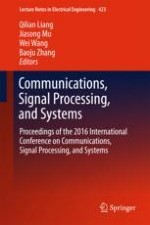2018 | OriginalPaper | Chapter
Automatic Target Recognition for SAR Images Based on Fuzzy Logic Systems
Authors : Xuhong Feng, Qilian Liang
Published in: Communications, Signal Processing, and Systems
Publisher: Springer Singapore
Activate our intelligent search to find suitable subject content or patents.
Select sections of text to find matching patents with Artificial Intelligence. powered by
Select sections of text to find additional relevant content using AI-assisted search. powered by
